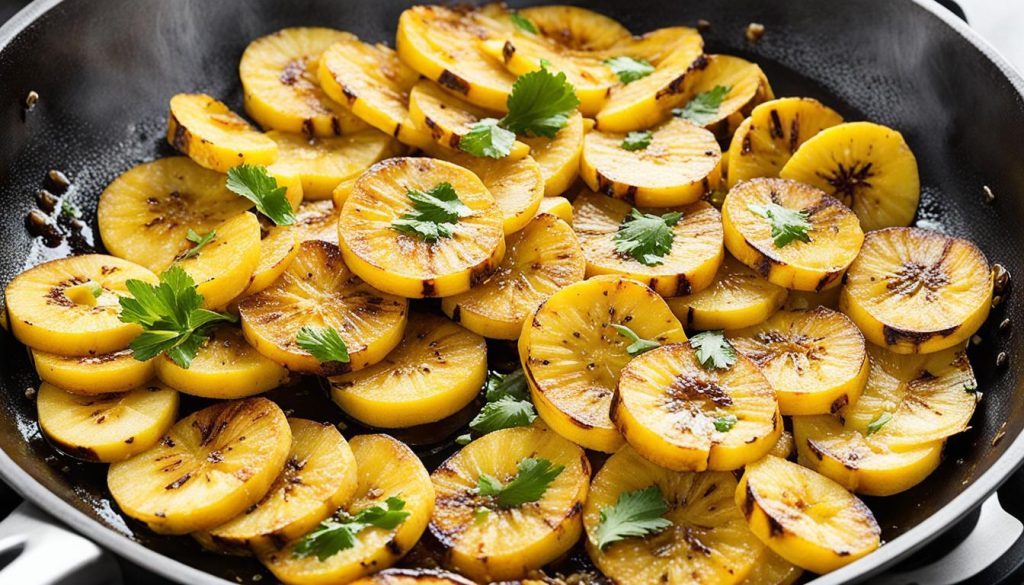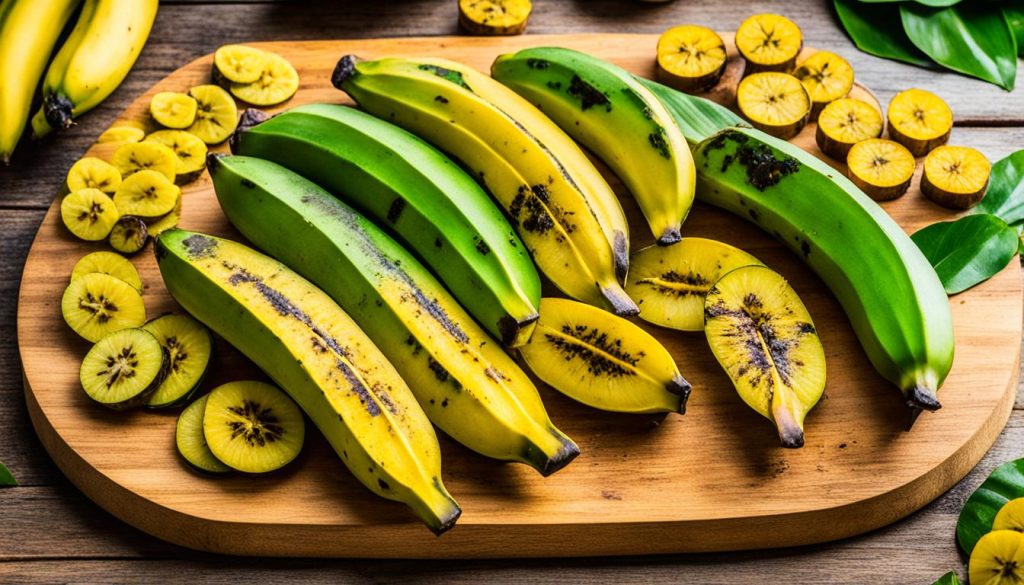The rich tapestry of Latin American cuisine offers an array of flavors that tantalize the taste buds with their unique combinations. Central to this culinary tradition is the beloved patacones, a dish that spans across borders and brings a comforting crunch to the table. Perfecting patacones begins with understanding the different methods of preparing food for patacones, whether it be through baking, stewing, frying, or steaming. Each technique infuses the plantains with distinct textures and flavors that can be tailored to personal preference or dietary needs.
Baking patacones unlocks a healthful twist to this classic, yielding a crispy exterior without an excess of oil. On the contrary, stewing patacones by initially boiling the plantains softens the texture before frying adds the necessary crispness. The popular method of frying patacones involves golden-browned slices of plantain, achieving the quintessential crunch. Lastly, steaming patacones is an unconventional approach, generating a tender profile that still allows for a finishing fry. The choice of cooking method for patacones can transform the same staple ingredient into an entirely new experience.
Key Takeaways
- Understanding diverse cooking techniques is crucial for preparing food for patacones.
- Baking patacones offers a healthier alternative with a deliciously crispy outcome.
- Stewing patacones combines boiling and frying for a soft yet crispy texture.
- The traditional approach of frying patacones delivers the classic crunch loved by many.
- Steaming patacones is a less common but healthier method to soften plantains before frying.
- Each cooking method can significantly alter the flavor and texture profile of the beloved patacones.
Understanding Plantains: The Staple Ingredient for Patacones
When delving into the world of Latin American culinary delights, a good starting point is understanding plantains. These starchy relatives of bananas are a cornerstone in many dishes, but paramount in the creation of patacones. Green plantains, in particular, hold a place of prestige as the staple ingredient for patacones, a savory classic that graces tables from Colombia to Costa Rica.
One might erroneously conclude that bananas and plantains are interchangeable. However, the higher starch content and lower sugar levels in plantains mean they’re not usually eaten raw. Their culinary versatility shines when they are cooked, which unlocks their true potential. Whether they are fried to a golden crisp for patacones or mashed for mofongo, plantains cater to a wide spectrum of tastes and preferences.
- Boiled for a soft, pliable texture
- Grilled for a smoky note
- Baked for a healthier, crisp edge
- Mashed for stuffing or dough-based recipes
As plantains mature, their functionality in the kitchen expands. Ripe plantains with blackened skins are sweet and ideal for desserts or contrasting flavors in savory plates. Yet, for patacones, the unripened green variant is what you need. Their firmness is perfect for creating that desired crunchy texture after being twice-fried.
Afficionados recognize that the success of a patacones dish hinges not only on understanding plantains but also on selecting the best specimen. The ideal candidates are those green, firm, and free from blemishes. In some recipes, green bananas might be suggested as a substitute, but they do not replicate the authenticity that plantains bring to the table.
Ultimately, the beauty of plantains lies in their transformation – a plantain undergoes a metamorphosis with heat and technique, turning from an unassuming, inedible fruit into a crispy, delicious foundation for a myriad of dishes, with patacones standing proud as a testament to its versatility.
How Do You Prepare the Food That is Used to Make Patacones?
When it comes to preparing food for patacones, each step carries its own importance to ensure the authentic taste and texture that makes this dish a beloved staple. Let’s delve into the nuanced process that starts with selecting the ideal plantain and ends with a golden crispness that captivates the palate.
Choosing the Best Plantains for Patacones
Seeking out the best plantains for patacones is the first critical step in the preparation journey. Green, firm plantains are the top choice, as they offer the perfect balance of starchiness and structure necessary for a satisfying crunch. Look for plantains that have taut skin free of extensive black spots or blemishes, as these characteristics are indicative of the prime stage for frying.
Peeling and Slicing Techniques
Mastering peeling and slicing techniques for patacones ensures that the plantains are prepared uniformly for even cooking. Begin by lopping off each end and carving a shallow cut lengthwise to aid in peeling. Press the edge of the knife under the skin and peel it back, removing it completely. Next, slice the plantains, determining the thickness according to whether a thicker bite or a crispier, thinner patacon is preferred.
The Frying Process
When frying patacones, maintaining the correct oil temperature is crucial to avoid sogginess. In a suitable frying pan, heat the oil to an optimal temperature so it sizzles upon contact with the plantain slices. Carefully lay in the pieces and fry them until they reach a coveted golden brown hue. Once achieved, remove the patacones and allow them to drain on a paper towel, which will help wick away any excess oil before the final step of pressing and completing the second fry.

With these techniques combined, preparing patacones becomes less of a mystery and more of a culinary adventure. It’s a task that beckons chefs and home cooks alike to take green plantains from their unassuming beginnings to a delicious, crispy end. Whether served as a delightful appetizer or as a hearty companion to a main dish, patacones prepared with care are sure to be a flavorful highlight.
Alternative Cooking Methods: Exploring Baking, Stewing, and Steaming
While the classic crispiness of fried patacones continues to be a beloved staple in Latin American cuisine, exploring alternative cooking methods for patacones offers a variety of textures and flavors while providing options for those seeking healthier preparations. Baking patacones is an excellent technique for health-conscious gourmands. It involves evenly spreading plantain slices on a baking sheet and cooking them in a preheated oven, creating a delightfully crispy exterior without the need for excess oil. This method not only yields a lighter option but also offers a crunchy satisfaction that rivals the traditional frying approach.
For those who enjoy a tender bite in their patacones, stewing patacones presents a unique culinary twist. This approach begins with boiling plantains until they soften, followed by a light frying to instill a golden crispiness around the edges. The result is a patacones dish with a softer, more mellow texture that absorbs flavors more profoundly, allowing for an array of seasoning possibilities. Stewing is a testament to the versatility of plantains and showcases how a simple change in the cooking process can significantly alter the dining experience.
Lastly, steaming patacones provides a gentler alternative that maintains the integrity of the plantain’s flavors. This lesser-known method involves steaming the plantains until they reach the perfect level of tenderness before they are fried to perfection. Not only does steaming preserve the plantain’s natural moisture content, but it also can lead to a slightly healthier version of patacones. By incorporating these alternative cooking methods, such as steaming patacones, into your culinary repertoire, you can discover new dimensions of this traditional dish, ensuring it remains a versatile and enjoyable part of any meal.


